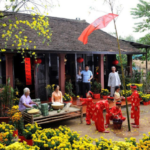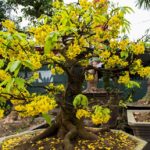Every time Tet comes, the streets and houses of the Vietnamese people are adorned with beautiful yellow apricot blossoms, carefully chosen by everyone to offer to their ancestors, wishing for a prosperous and happy new year.
However, few people know why the apricot blossom is a symbol of the traditional Vietnamese Tet. That’s why we want to bring you useful information to understand more about Vietnamese culture.
1 Information about the apricot tree
Origin of the apricot blossom
In English, the apricot blossom is called Apricot Flowers and its scientific name is Ochna integerrima. In addition, the apricot tree is also known as the Mai tree. The tree belongs to the Mai family (Ochnaceae) and is popular during the Lunar New Year in Vietnam, especially in the southern region.
In Vietnam, apricot trees are mainly found in the Truong Son mountain range, the Mekong Delta, and the provinces of Quang Nam, Da Nang, and Khanh Hoa. There are also a few trees in the highlands.
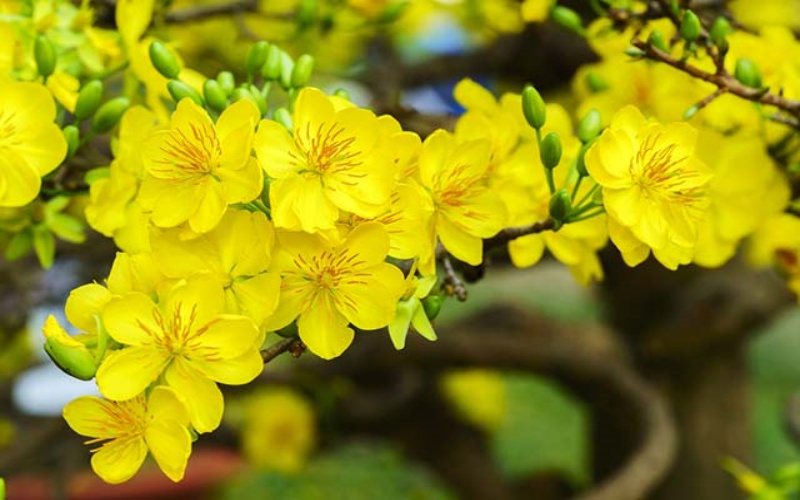 Introducing the apricot tree
Introducing the apricot tree
The origin of the apricot blossom is from China, where they appeared more than 3000 years ago. According to the records of Phi Cong An, a Ming Dynasty author of the book “Tran Huong Bao Ngu,” it states: “Dac Ky ai lam han mai. Tru tang ngu tuyet dong lam chi.” In translation, it means “Dac Ky loves to admire apricot blossoms in the cold weather. The emperor often wears snow and admires them.”
Thanks to the beauty of the apricot blossom, since ancient times, the people of China have loved apricot blossoms, and apricot and pine, bamboo, and chrysanthemum are not only considered the “Four Gentlemen of the Chinese New Year” but also revered as their national flower.
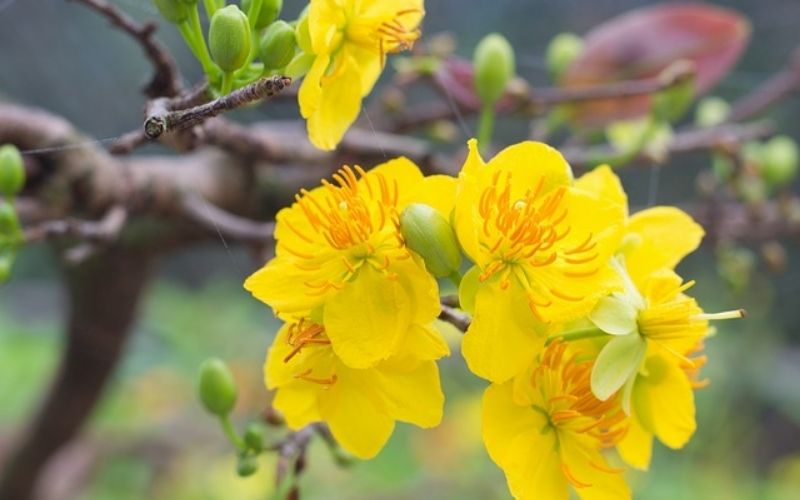 “Thuy tien mai” is a type of apricot blossom with 6 round petals, similar to water lilies
“Thuy tien mai” is a type of apricot blossom with 6 round petals, similar to water lilies
Originally, the apricot blossom was a wild tree. It thrives in tropical climates and has a strong ability to grow and develop. It has been observed that if the apricot tree is carefully taken care of, its blossoms will be beautiful and the tree will have a long lifespan.
Due to its characteristic of shedding leaves in late winter and blooming at the beginning of spring, the apricot tree is often planted as a decorative tree for the Lunar New Year in Asia in general and Vietnam in particular.
Characteristics of the yellow apricot tree
Shape and root system
The apricot tree has a tall and slender shape, it is a long-lived tree that can grow and develop well for over a hundred years. The yellow apricot tree is a woody tree, so the trunk is strong, the branches are slightly brittle but can still be bent to shape the tree. The trunk is rough and the tree has many branches and twigs. The canopy of the tree has sparse leaves, and if left to grow freely, the tree can reach a height of 20-30m. The tree has a large root system, with roots growing deep into the ground up to 2-3m.
Apricot leaves
Apricot leaves are single leaves, growing alternately, with elongated oval-shaped leaflets. The leaves are blue-green, but the undersides of the leaves have a slight yellowish hue.
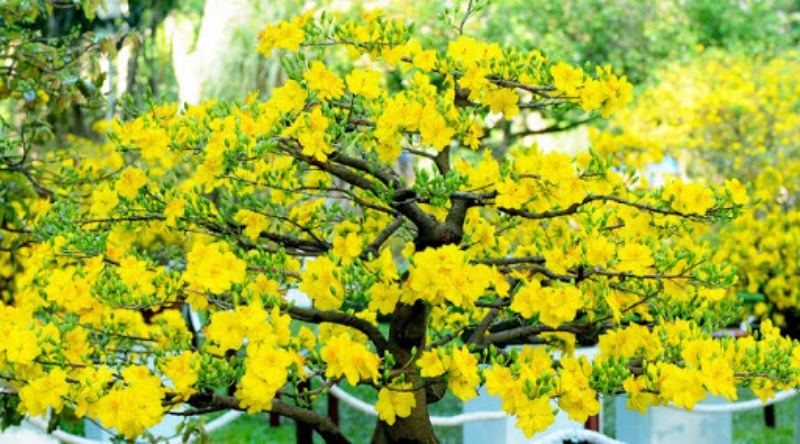 Characteristics of the apricot tree
Characteristics of the apricot tree
Apricot blossoms
The apricot blossom is a bisexual flower. The flowers grow from the leaf axils and form clusters. Initially, female flowers appear, then the female flowers will bloom, revealing small green buds. Within about a week, the buds will bloom into bright yellow apricot blossoms. The structure of the apricot blossom usually consists of 5 delicate and thin petals, but there are also special ones with up to 9-10 petals. The apricot blossoms usually bloom for 3 days before withering.
Blooming time
Although apricot blossoms usually bloom in the spring, due to the changing weather, flowering can be unpredictable, resulting in early blooming or blooming at the wrong time. Not all flowers can bear fruit. If a flower is able to bear fruit, after withering, the ovary of the flower will swell. It will then form a seed over time.
2 Meaning of the apricot blossom in Tet
Since ancient times, the apricot tree has been closely associated with the rural areas and farmland of Vietnam, tied to the people from the time their ancestors cleared the land and established villages for their livelihoods. The apricot tree takes root in the soil and does not yield to the wind and storms, no matter how harsh the weather, it remains resilient over the years, always full of vitality and blooming flowers at the beginning of spring.
That’s why our ancestors considered the apricot tree as a symbol of integrity, always steadfast in their sense of moral duty, like the enduring strength that withstands the wind and rain, and then blooms with sweet fragrance at the beginning of spring.
Meaning of the apricot blossom in Tet
According to folklore, before Master Man Giac passed away, he wrote:
“Do not think that spring will end and all the flowers will fall
Yesterday night, in front of the courtyard, there was an apricot blossoms branch.”
Just overnight, on the doorstep, suddenly a series of apricot branches blossomed miraculously. Perhaps that’s why every family tries to decorate their homes with blooming apricot branches to bring in the new year with lots of joy and happiness.
In addition, the yellow color of the apricot blossom symbolizes prosperity and wealth. The blooming apricot tree at the beginning of the year brings prosperity, happiness, and abundance throughout the year.
3 Types of apricot blossoms
According to statistics, there are currently more than 24 types of apricot trees worldwide, and there are about 19 types in Vietnam. The most common six types of apricot trees in the world are the Cao Mien Apricot (Cambodian Apricot), Indonesian Apricot, Myanmar Apricot, South African Apricot, African Apricot, and Madagascar Apricot.
Below is a compilation of the most common apricot tree types:
Tu Quy Apricot
 Tu Quy Apricot
Tu Quy Apricot
The Tu Quy apricot tree is also known as the red apricot tree and its scientific name is Ochna Atropurpurea. This ornamental flower blooms not only in the spring but can also bloom all year round. It is especially unique that this apricot tree blooms twice, first in yellow and then in red. When the apricot tree first blooms, it will have 5 bright yellow petals that will all fall when they wither, leaving 5 red sepals that will enclose the flower bud.
Hanh Mai
 Hanh Mai
Hanh Mai
The Hanh Mai tree, scientific name Prunes Mume, is also known as the apricot plum tree. It has a limited height compared to many other apricot tree types, only about 6-9m. The leaves of the apricot plum tree are oval-shaped and have prominent colors of white and pink. The fruit starts green and turns yellow when ripe, with a slightly sour and sweet taste.
Bach Mai
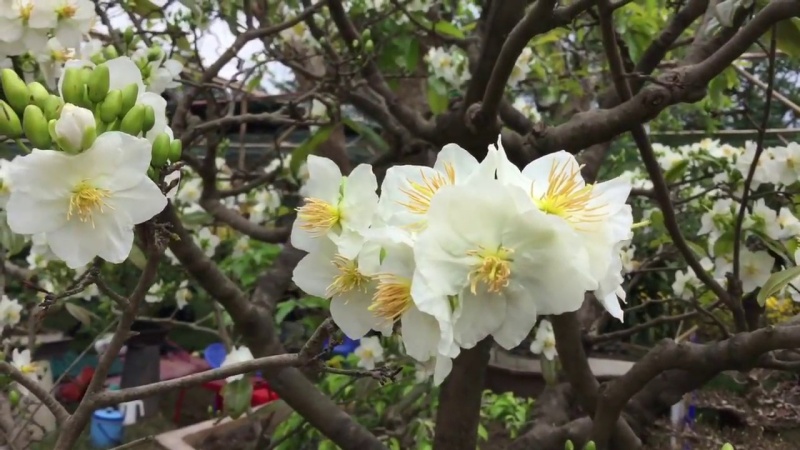 Bach Mai
Bach Mai
The Bach Mai flower is mainly found in Ben Tre, Ba Den – Tay Ninh mountains, and Ha Tien. This apricot flower has a pure white color, with 6-8 thick petals that resemble porcelain flowers. A disadvantage of this white apricot tree is that it is difficult to grow and care for.
Hong Mai
 Hong Mai
Hong Mai
The scientific name of the Hong Mai tree is Jatropha pandurifolia, it is a woody plant with a height of about 1-4cm. The leaves of the tree are dark green, growing singly and lobed. The Hong Mai flower has 5 petals, a beautiful pink color, and bright yellow stamens. The flowers bloom in clusters on the branches and can bloom all year round, not just in the spring. When ripe, the fruits of the Hong Mai tree turn black-brown.
Hoang Mai
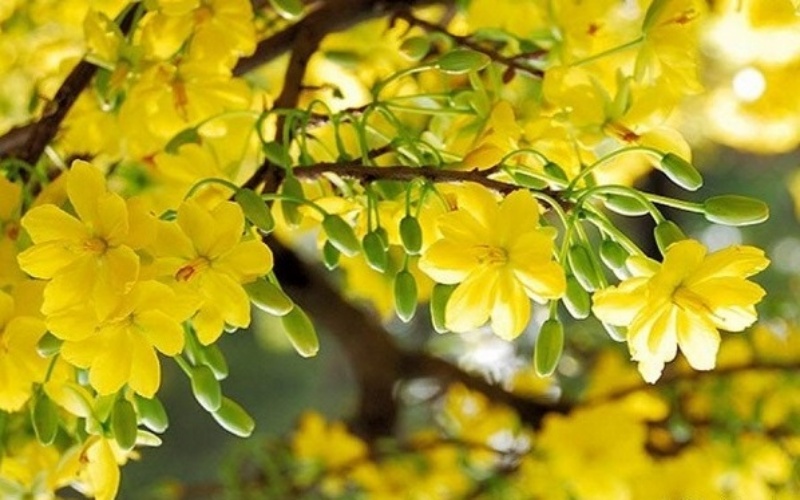 Hoang Mai
Hoang Mai
This type of tree is also known as Lap Mai. The flowers have 5 small, vibrant yellow petals. The Lap Mai tree gets its name because it only blooms once a year at the end of the lunar month.
Song Mai
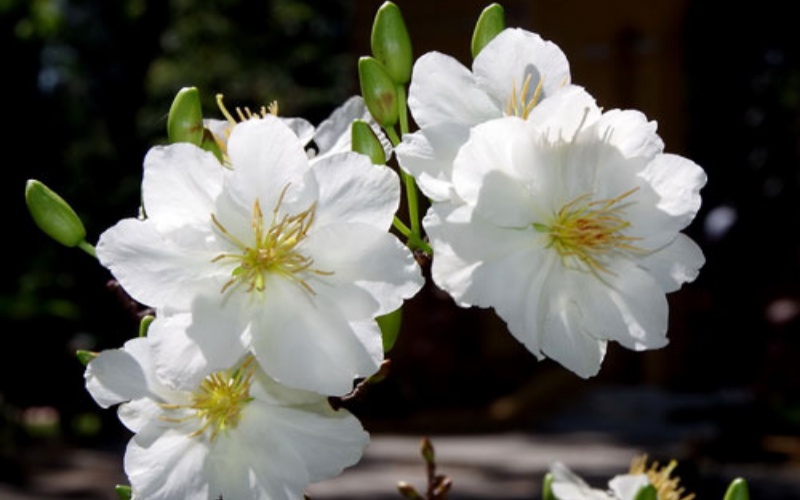 Song Mai
Song Mai
It is named so because this type of apricot tree usually blooms and bears fruit in pairs. The flowers are white, pure, and elegant.
Mai Chieu Thuy
 Mai Chieu Thuy
Mai Chieu Thuy
The Mai Chieu Thuy tree is a perennial tree with a scientific name of Wrightia Religiosa and a height of about 1.5m. It has many branches, a large base, small but long leaves, and paired leaves. The flowers are small, white, grouped into small clusters, with 5 small petals and a gentle fragrance. It is called Mai Chieu Thuy because the flower stem always hangs downward.
Nhat Chi Mai
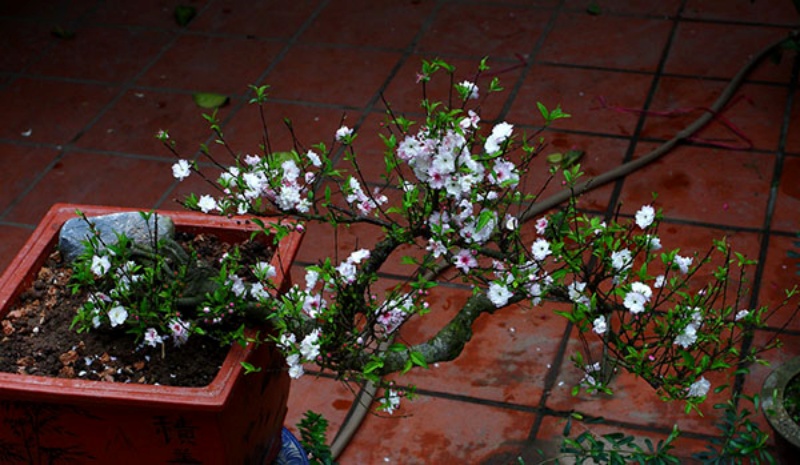 Nhat Chi Mai
Nhat Chi Mai
The Nhat Chi Mai tree has a large, rough trunk. The leaves are small, green, and paired, with a shape resembling a cap. The Nhat Chi Mai flower is smaller than other types, with many delicate petals. At first, they are white, but when they wither, they gradually turn red. The flowers can bloom individually or in clusters.
Mai Cuc
is a woody plant with many branches and originates from Binh Dinh. The flowers can have a large or small number of petals, and well-cared-for flowers can have up to 150 petals. Mai cuc seedlings, about 30cm tall, cost about 150,000 VND per plant, while larger Mai cuc trees, about 1.5m tall, cost about 3,900,000 VND per plant.
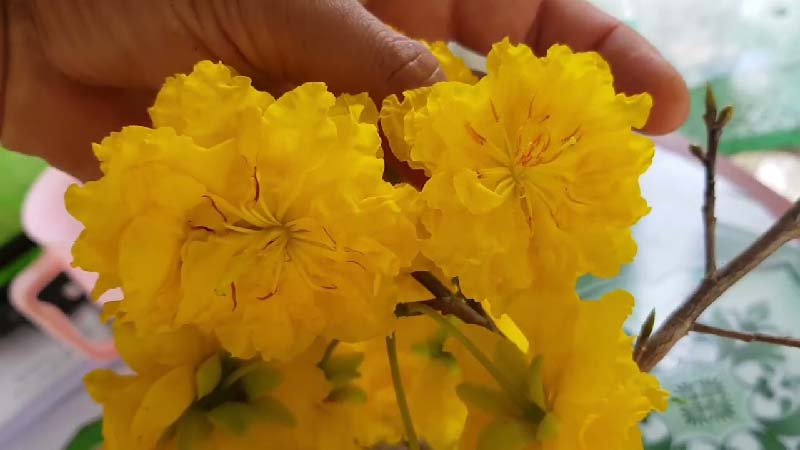 Mai cuc
Mai cuc
Mai Dai Loc
is known for its rare red buds that many people love. The petals are close, round, and colorful, with a quantity ranging from 24 to 56 petals. The Mai Dai Loc tree is a symbol of good luck, a perfect and prosperous start to the new year.
 Mai Dai Loc
Mai Dai Loc
Mai Xanh
, also known as Petrea Volubilis in English, is a climbing plant, with a rough, grayish-brown stem that can grow up to 10-12 meters long. There are two common types of Mai xanh, which are the Thai apricot and the Da Lat blue apricot.
 Mai Xanh
Mai Xanh
Other types of apricot blossoms
In addition to the most common apricot tree types mentioned above, Vietnam also has many other types of apricot trees. For example, the dang apricot tree, the duong apricot tree, the chi thien apricot tree (van phuc apricot tree, little lady apricot tree), the thanh mai tree, the yellow swallow apricot tree, the stone apricot tree, the snow pine apricot tree, the Japanese apricot tree, the Thai apricot tree, the cam tu apricot tree, the mai rung (mountain apricot tree), the bach tuyet apricot tree, etc.
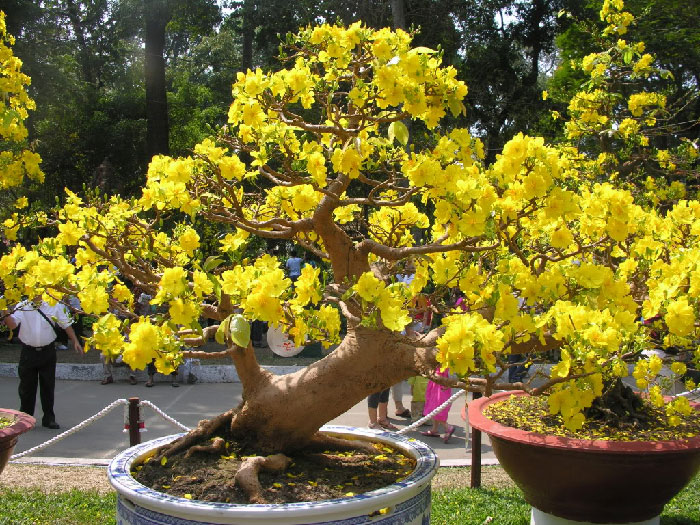
4 How to plant apricot trees
Apricot tree propagation techniques
Apricot trees can be propagated in many ways, with the most common being seed sowing and branch cutting. Each method has its advantages and disadvantages for apricot trees, as follows:
- Seeding method: When sowing seeds, you will have a large number of young apricot trees, which can live for 30-40 years if grown freely, saving effort and time. However, the disadvantage is that the new apricot trees will not have the good characteristics of the parent tree, such as fewer branches, smaller flowers and leaves, different colors, etc.
- Branch cutting method: The advantage of this method is that it preserves the good characteristics of the original tree. When cutting branches, you need to choose small, healthy branches and make a 3-4cm long incision, making sure not to cut into the wood. Surround the cutting with a mixture of soil mixed with coconut fiber, compost, etc. Then water regularly and take care of the cutting for about 3 months until it produces many roots, then you can separate the branch from the parent tree.
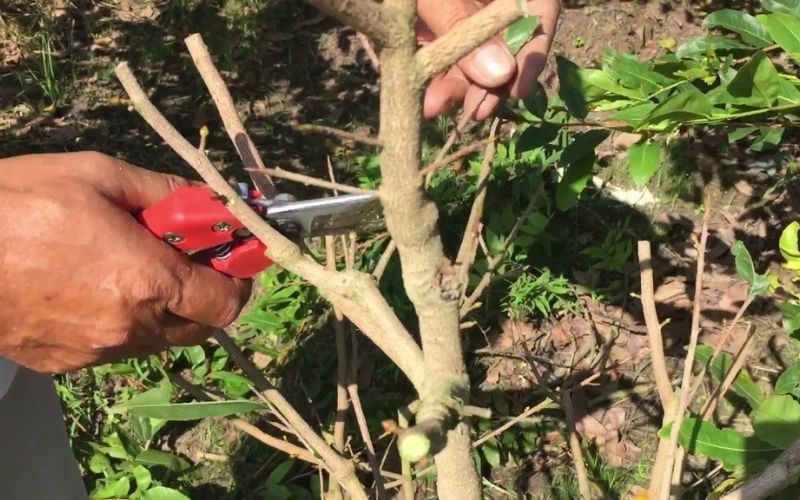
Apricot tree planting techniques
When planting apricot trees, you need to ensure the density and spacing of the trees to allow for their comprehensive development.
The beginning of the rainy season is the best time to plant apricot trees.
The soil for planting is also a very important factor. You need to prepare moist, organic soil by mixing it with coconut fiber, rice husk, black soil, and compost, etc.
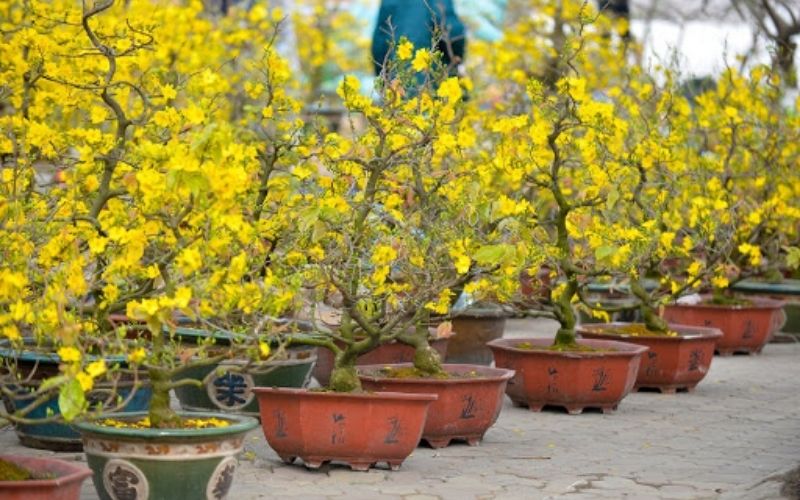
Apricot trees tolerate drought, so you can water them twice a day in the morning and evening with an appropriate amount of water, ensuring that the tree is not withered or flooded.
During the planting process, you need to fertilize the trees with nitrogen-rich and phosphorus-rich fertilizers instead of potassium. You can use NPK fertilizer in the right amount, apply it away from the tree roots, and fertilize 2-3 times per month. It is best to fertilize during the rainy season. In addition, after replacing the soil for the trees after about 3-4 months, you can fertilize them with compost and livestock manure.
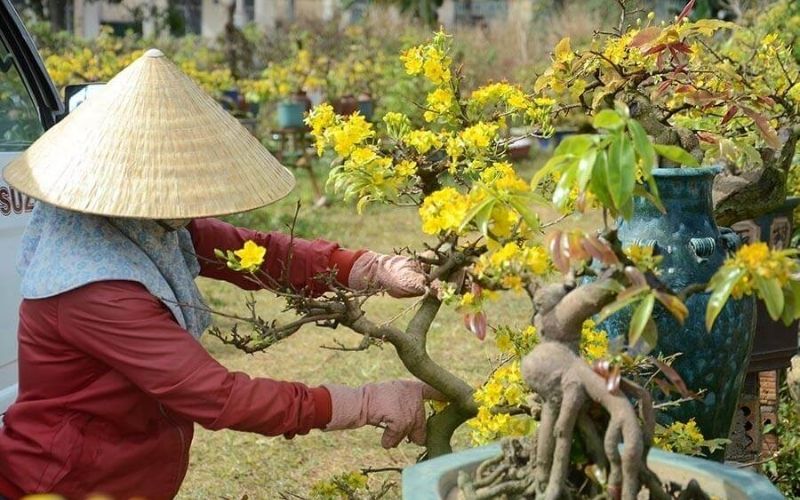
Remember to regularly remove weeds, loosen the soil around the base, and control pests for the trees. Alternatively, you can weed before the rainy season for the apricot tree!
6 Caring for apricot trees after Tet
Apricot tree pruning technique
You need to prune the branches appropriately depending on the shape and initial size of the tree. Generally, cut off 1/3 of the branches or prune the upper branches shorter to resemble a Christmas tree shape.
The appropriate time to prune branches is before the 15th day of the lunar month, if delayed, it is still recommended to prune by the 20th.
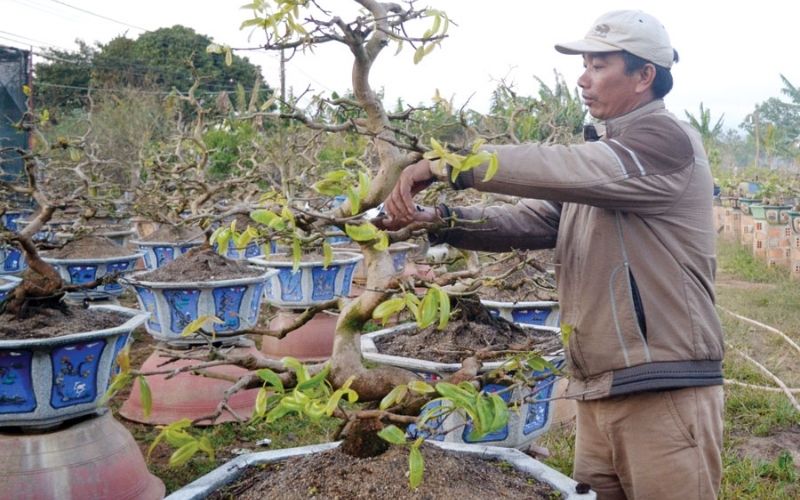
Apricot tree hygiene
You can use a strong water spray on the tree to remove moss and mold on the bark. Another method is to use concentrated urea fertilizer to spray on the tree (without letting it flow down to the roots), wait for 10 minutes, then brush off the mold with a brush.
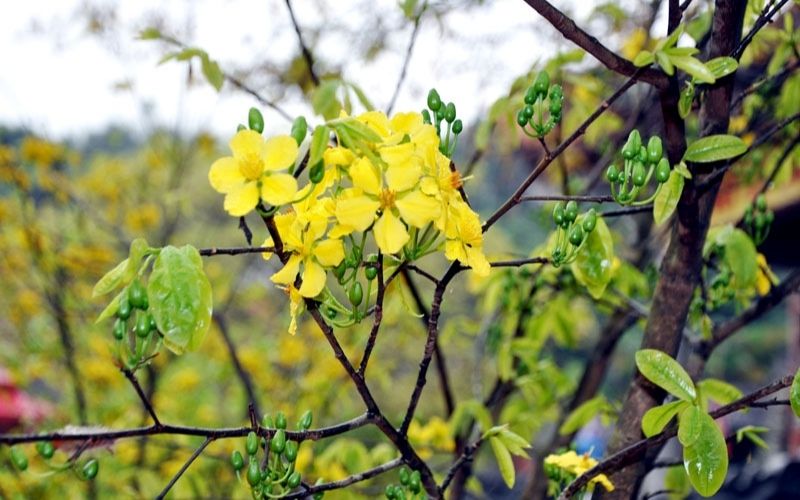
7 Beautiful apricot blossom images for Tet 2023
Beautiful apricot blossom images for Tet 2023
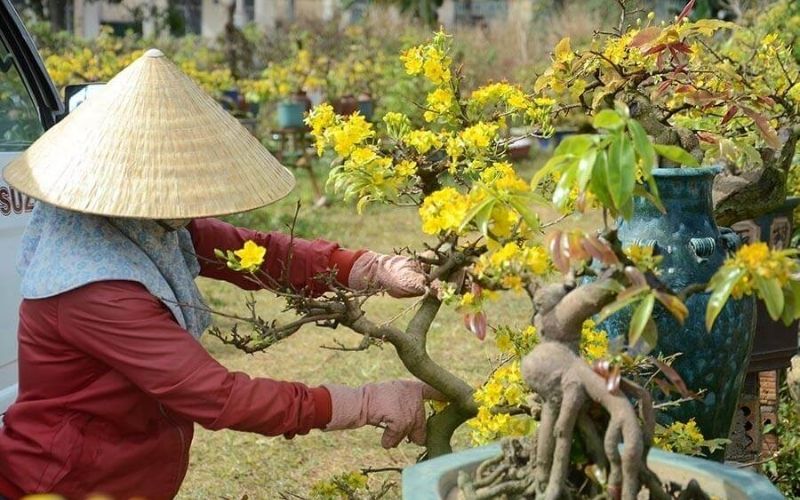 The apricot blossom is called Apricot Flowers and its scientific name is Ochna integerrima
The apricot blossom is called Apricot Flowers and its scientific name is Ochna integerrima
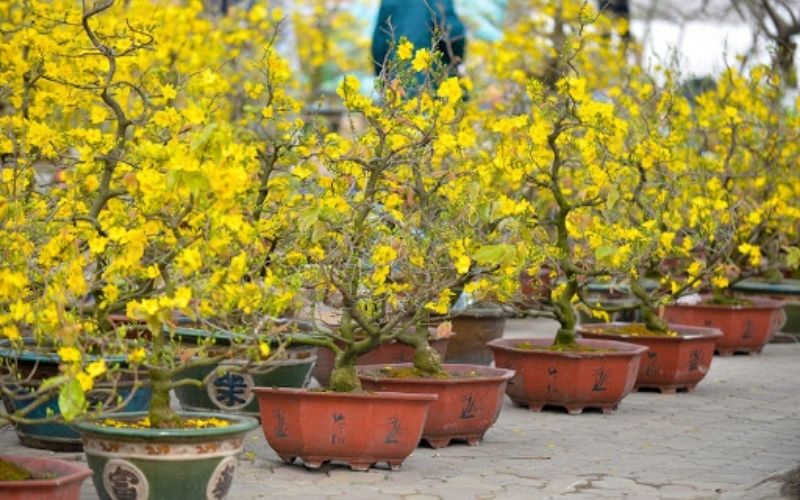 Apricot trees are mainly found in the Truong Son mountain range, the Mekong Delta, and the provinces of Quang Nam, Da Nang, and Khanh Hoa
Apricot trees are mainly found in the Truong Son mountain range, the Mekong Delta, and the provinces of Quang Nam, Da Nang, and Khanh Hoa
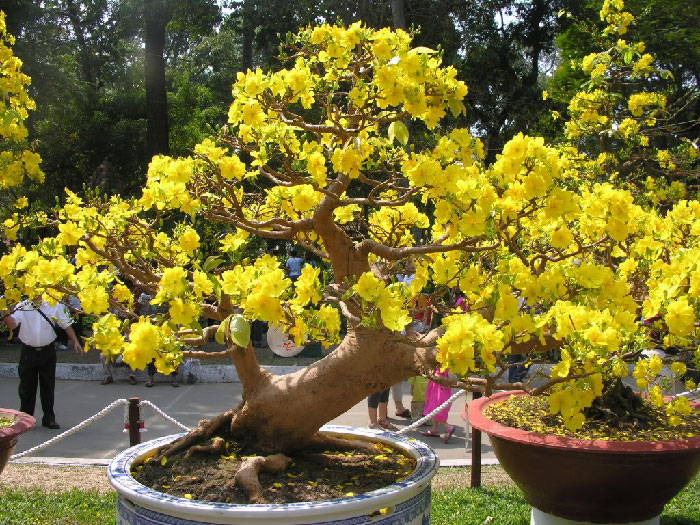 The origin of the apricot blossom is from China, they appeared more than 3000 years ago
The origin of the apricot blossom is from China, they appeared more than 3000 years ago
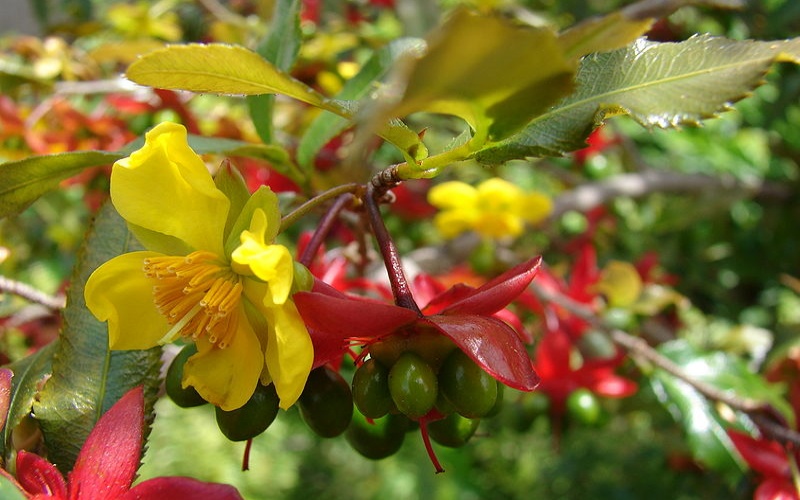 The apricot tree was originally a wild tree
The apricot tree was originally a wild tree
The apricot tree is always the choice of the Vietnamese people to offer to their ancestors and decorate their homes, symbolizing the sustainable, trustworthy, and peaceful nature of life, and wishing for a year full of happiness, prosperity, and good luck.
Preparing Yellow Apricot Flowers to be in Full Bloom for Tet Celebration
As the Lunar New Year quickly approaches, many families are looking for guidance when it comes to selecting, purchasing, maintaining, and decorating with beautiful golden apricots. To ensure you get the most out of this lovely tradition, this article will provide you with specific instructions for choosing, caring for and decorating with yellow apricot blossoms. Learn how to make the most of this iconic symbol of the Tet holiday season!


























